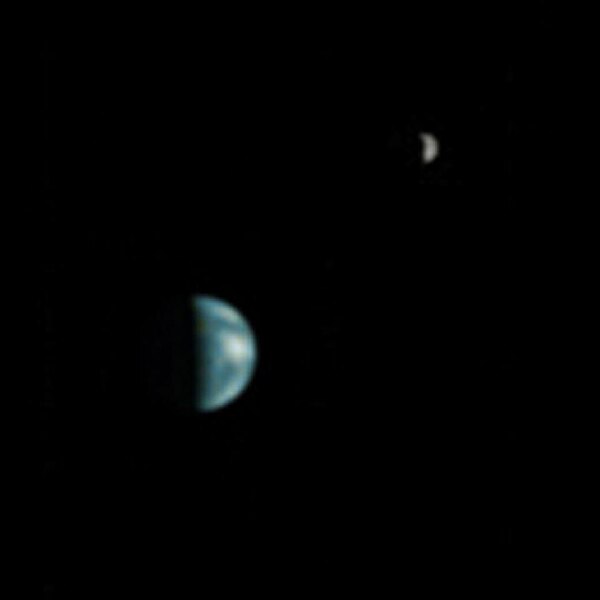File:Earth and Moon from Mars PIA04531.jpg
外观

本预览的尺寸:600 × 600像素。 其他分辨率:240 × 240像素 | 480 × 480像素 | 961 × 961像素。
原始文件 (961 × 961像素,文件大小:17 KB,MIME类型:image/jpeg)
文件历史
点击某个日期/时间查看对应时刻的文件。
| 日期/时间 | 缩略图 | 大小 | 用户 | 备注 | |
|---|---|---|---|---|---|
| 当前 | 2005年7月11日 (一) 14:07 |  | 961 × 961(17 KB) | Complex01 | Courtesy NASA/JPL/Malin Space Science Systems [http://www.jpl.nasa.gov/images/policy/index.cfm] [http://www.msss.com/moc_gallery/policy.html] Image of Earth and Moon, taken by the Mars Orbiter Camera of Mars Global Surveyor on May 8 [[200 |
文件用途
以下2个页面使用本文件:
全域文件用途
以下其他wiki使用此文件:
- af.wikipedia.org上的用途
- ar.wikipedia.org上的用途
- bg.wikipedia.org上的用途
- ca.wikipedia.org上的用途
- cs.wikipedia.org上的用途
- da.wikipedia.org上的用途
- de.wikipedia.org上的用途
- en.wikipedia.org上的用途
- en.wikiquote.org上的用途
- en.wikiversity.org上的用途
- User:Emesee/Learning gallery
- User:Marshallsumter/Keynote lectures (draft)/Astronomy
- Solar System, technical/Earth
- Solar System, technical/Moon
- User:Marshallsumter/Radiation astronomy1/Planets/Sciences
- User:Marshallsumter/Radiation astronomy1/Opticals
- User:Marshallsumter/Radiation astronomy1/Objects
- User:Marshallsumter/Radiation astronomy1/Opticals/Quiz
- Object astronomy
- User:Marshallsumter/Radiation astronomy/Courses/Principles/Hourly 2
- User:Marshallsumter/Radiation astronomy/Courses/Principles/Midterm quiz
- User:Marshallsumter/Radiation astronomy/Courses/Principles/Final quiz
- Stars/Solar systems
- User:Marshallsumter/Radiation astronomy2/Scattered disks/Quiz
- User:Marshallsumter/Radiation astronomy1/Kuiper belts/Quiz
- User:Marshallsumter/Radiation astronomy/Astronomy
- User:Marshallsumter/Radiation astronomy/Earth
- es.wikipedia.org上的用途
- fa.wikipedia.org上的用途
- fr.wikipedia.org上的用途
- gu.wikipedia.org上的用途
- hr.wikipedia.org上的用途
- hu.wikipedia.org上的用途
- id.wikiquote.org上的用途
- it.wikipedia.org上的用途
- ja.wikipedia.org上的用途
- kn.wikipedia.org上的用途
查看此文件的更多全域用途。



